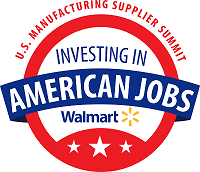Reshoring & Sustainability: Lifting the Green Curtain by Zach Sudnick
 The phrase “Pay no attention to that man behind the curtain!” rings throughout the chamber as Toto pulls back the Wizard’s disguise. Many of us know the story of The Wizard of Oz; a young girl, thrust into a world of magic and mystery, makes her way to the Emerald City, seeking aid from the great and powerful Oz. Upon arrival, though, we learn that there is no powerful wizard at all. Instead, we find a regular man, hiding behind his shallow green curtain. Like many timeless stories, lessons found in The Wizard of Oz can teach us much about the trials of today. Yet, unlike the movies, the veil which obscures our view is not always easy to see.
The phrase “Pay no attention to that man behind the curtain!” rings throughout the chamber as Toto pulls back the Wizard’s disguise. Many of us know the story of The Wizard of Oz; a young girl, thrust into a world of magic and mystery, makes her way to the Emerald City, seeking aid from the great and powerful Oz. Upon arrival, though, we learn that there is no powerful wizard at all. Instead, we find a regular man, hiding behind his shallow green curtain. Like many timeless stories, lessons found in The Wizard of Oz can teach us much about the trials of today. Yet, unlike the movies, the veil which obscures our view is not always easy to see.
Today, our “green curtain” has become something much more insidious. Offshoring, the process of moving manufacturing operations overseas, has become an attractive option to many U.S. firms due to its low-effort cost-cutting yields. But as the silver screen has often taught us, not all things are as good as they seem. In the face of climate change, offshoring paves the way for market conditions which enable regulatory loopholes and environmental degradation. As global temperatures continue to rise, it is important for products to become environmentally sustainable at every stage of their lifecycle. Offshoring makes this nearly impossible to assure. Moreover, it prevents U.S. firms from fully understanding how their products impact the world.
Consider the following question: how can we effectively monitor our environmental impact when our manufacturing is taking place thousands of miles away in a country with a different set of laws and regulations? With offshoring, firms cannot see a facility is dumping its hazardous materials in a nearby water source or emitting excessive amounts of greenhouse gases, they can only see the final product found in their latest shipment. The complication is present in the veil which is placed over all of the negative impacts that can result from cost-cutting. Yet, these costs do not simply disappear; rather they are pushed into the future, accumulating as an environmental debt that we must eventually pay. Reshoring provides a method for cradle-to-grave sustainability. By keeping manufacturing processes in the same country as the operating firm, regulatory consistency and environmental compliance can be achieved in order to create more accountable and sustainable business practices. In order to protect our world for generations to come, we must lift the green curtain.
 Zach Sudnick is currently pursuing a Masters of Business Administration at the University of Kentucky. He holds BA degrees in Individualized Studies, Sustainability, and Energy from Miami University.
Zach Sudnick is currently pursuing a Masters of Business Administration at the University of Kentucky. He holds BA degrees in Individualized Studies, Sustainability, and Energy from Miami University.
Zach has worked as an intern for a number of environmentally-focused non-profit organizations and government agencies and has held numerous leadership positions within community-based and sustainability-centered student organizations. In his MBA program, Zach will be working as a business consultant for a non-profit food bank with the mission of distributing food to the hungry throughout the state of Kentucky.



